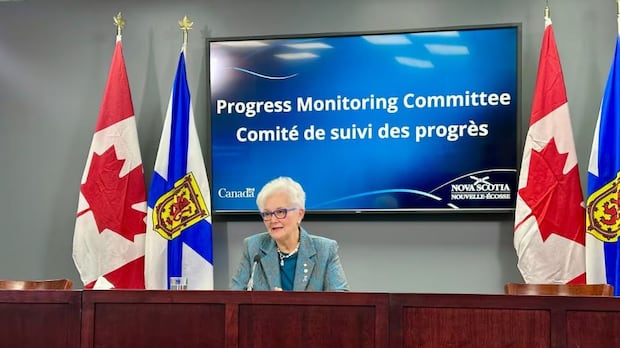Q&A: Mary Jane Hampton on medical practices not backed by science

Even medicine is susceptible to routines that are not backed by science.
That is what Mary Jane Hampton, CBC’s health-care columnist, says about some of the common practices patients see when visiting a doctor’s office.
Talking to Portia Clark on CBC Radio’s Information Morning, Hampton says certain routines are “useless.”
This interview has been edited for length and clarity.
Information Morning – NS7:35Health Hacks #266: A crinkle in using medical exam paper
It’s as emblematic in healthcare as a white coat and stethoscope. Today our healthcare columnist Mary Jane Hampton looks at that crinkly paper on examination tables. A recent study found it’s totally useless and is actually doing harm.
To what extent have some of these routines gone unquestioned in the medical system?
There is a long list of things that we do in the practice of medicine without any evidence. Prescribing antibiotics for sore throats, doing chest X-rays before every surgery, removing tonsils in preschoolers, even doing annual physical exams on otherwise healthy adults.
How have those things changed since we got better evidence?
Unless there’s evidence of a bacterial infection, antibiotics are a bad thing to prescribe for a sore throat.
We know that chest X-rays should only be done on patients with a medical history that suggests they’re at a higher risk for surgery — all the rest waste money and expose patients to the known risks of radiation.
All those kids without tonsils — me included — most of us could have kept them. There is evidence that they actually helped to boost the immune system. There was absolutely no benefit to having that surgery in the ’70s and ’80s.
Even the way we approach the annual health exam, which is now only recommended based on age and risks and with targeted cancer screening. Good health care is based on using evidence to make decisions. But implementing change can be difficult because people get very used to routines. We just get used to how things have always been.
Which routine are you curious about this week?
That crinkly paper on the examination table. It’s as emblematic in health care as a white coat and stethoscope, and familiar to anyone who has been in a doctor’s office in the past 50 years. I stumbled across a recent study about crinkly paper and found that it is totally useless.
It’s actually doing harm.
What’s the study?
It was published earlier this year in the Annals of Family Medicine and it was interesting from a couple of perspectives. First, it looked at the evidence supporting the use of exam bed paper in terms of infection control.
It also considered the product in terms of its environmental impact, which is an increasingly important lens to apply in the delivery of health care.
What did the researchers find out about infection control?
What they found is that the paper doesn’t make a speck of difference when it comes to infection control.
The researchers recruited patients undergoing physical exams that required them to get up onto the exam table, lie down and get off again. They wanted to see where the patient’s hands and skin made contact with the surface of the bed. So before they got up, they sprayed the patient’s hands and then they applied a black light to see where the hands had touched.
The prime source of contamination was made on the surface of the exam table not covered by the paper. In fact, there was very little contact with the paper at all.
Best practice guidelines are very clear that infection control involves wiping down the entire surface with low-level disinfectants between every patient. The paper is worse than just being useless because it may cause a false sense of cleanliness. It makes proper cleaning more difficult because you need to get that paper out of the way to wipe the surface clean.
What about its environmental impact?
The study also looked at the exam table paper’s environmental impact, which is significant. The paper requires harvesting trees, processing, packaging and distribution. It’s a single-use product that is almost always disposed of in the garbage that goes to a landfill.
What they found is that a typical doctor’s office that uses roughly three rolls of exam table paper a week would yield an annual carbon cost that would take nearly nine mature trees to be planted each year to offset it.
BC Cancer Program reported using 2,000 kilometres of exam table paper every year and stopped using it as part of their environmental stewardship program, called Planetary Health Campaign. That change happened because one doctor, Caroline Mariano, asked the question, ‘Why on Earth are we using this product for?’
So, what’s the health hack here?
So here’s the health hack: next time you’re in your doctor’s office and you see this product being used, ask why.
It’s a practice we should just stop.




